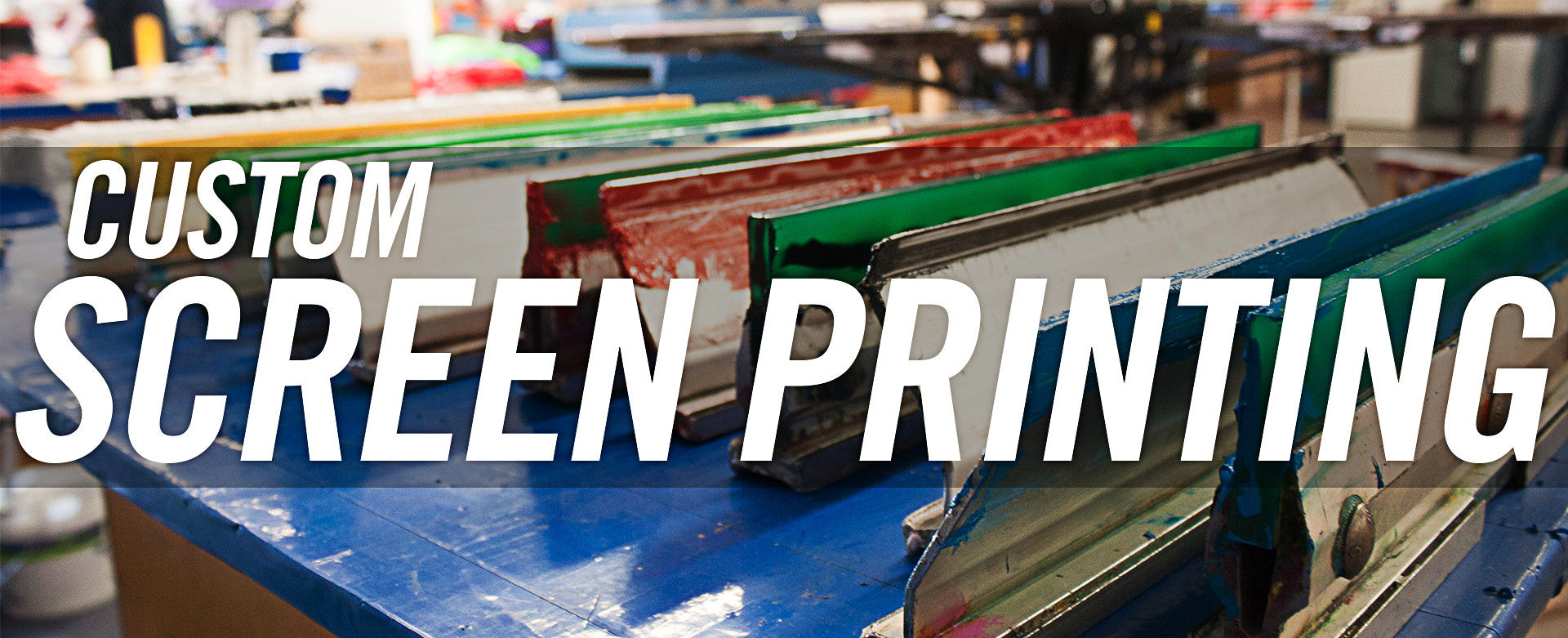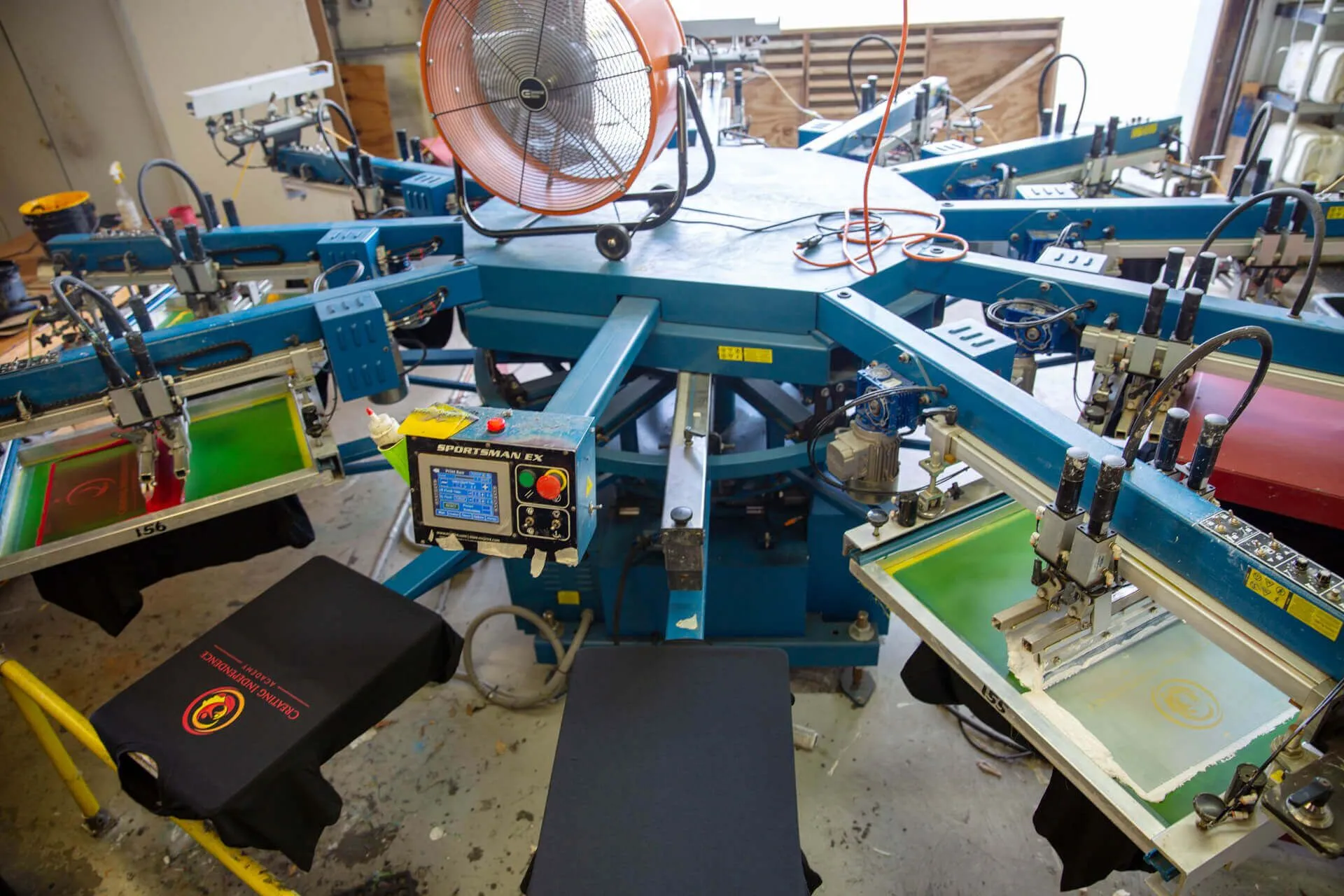Professional Screen Printing Kit for Custom Apparel
Professional Screen Printing Kit for Custom Apparel
Blog Article
Display Printing Uncovered: Whatever You Need to Know Concerning Tee Shirt and Garment Printing Techniques
If you've ever questioned exactly how those vibrant designs wind up on your favored t-shirts, you're in the right location. Screen printing is an interesting method that integrates art with strategy, using endless opportunities for creativity. Understanding the principles, from tools to ink choices, can significantly affect your results. Ready to explore the important aspects that make display printing an art type? Let's reveal the details that can raise your projects.
The Essentials of Screen Printing: How It Functions
When you plunge into display printing, you'll find it's both a scientific research and an art. At its core, screen printing includes producing a pattern, or display, that enables ink to go through only in certain locations (screen printing kit). You start by selecting your design and preparing your screen with a light-sensitive solution. As soon as you expose this emulsion to light, it solidifies, leaving your style as an adverse area.
Following, you'll blend your inks and prepare your printing surface area. Position the screen over the textile, then use a squeegee to press ink via the display onto the garment. This procedure requires precision, as you want clear, vibrant prints. After printing, you'll heal the ink with heat, ensuring it sticks to the material and lasts through laundries. Each action is vital, and understanding them will certainly elevate your display printing skills, transforming simple garments right into special, meaningful pieces.
Types of Display Printing Techniques
Once you comprehend the basics of screen printing, it's time to discover the numerous techniques that can boost your styles. One prominent approach is traditional screen printing, where ink is pushed with a stenciled screen. This method is terrific for strong, lively colors. There's water-based ink printing, which supplies a softer feeling and is green, however it requires a various method to treating.
If you're going for fine details, think about discharge printing. This strategy gets rid of color from the material, leaving a soft, classic look. An additional choice is plastisol printing, recognized for its durability and vibrant shades, making it a favored for many brand names. Finally, explore halftone printing to develop gradient impacts and elaborate layouts. Each strategy has its distinct charm, so do not wait to try them out to locate what fits your style best!
Vital Equipment for Display Printing
To achieve spectacular lead to display printing, having the right tools is basic. Initially, you'll require a sturdy screen printing framework, which holds the mesh that transfers your style onto the garment. Next, purchase top quality squeegees; these are necessary for using ink evenly across the screen. You'll additionally need a good exposure system to create your screens, in addition to a washout cubicle for cleaning them after use. A reputable warm resource, like a conveyor clothes dryer or warm press, is essential for curing your prints to ensure long life. Don't neglect a proper work area, geared up with tables and storage space for your materials. Finally, protective equipment, such as masks and handwear covers, will maintain you safe from chemicals and inks. With the right devices, you'll be well on your method to generating professional-quality prints.
Selecting the Right Inks and Products
When picking inks and products for display printing, you need to consider the kind of ink that functions best for your project. Believe regarding textile compatibility to guarantee your styles look excellent and last lengthy. Likewise, explore green ink choices to make your printing procedure a lot more sustainable.
Types of Display Inks
Choosing the right display ink is important for achieving vibrant, sturdy prints that satisfy your project's requirements. There are several kinds of screen inks to take a look at. Plastisol ink is prominent for its flexibility and simplicity of usage, providing exceptional shade opacity on dark fabrics. Water-based ink, on the other hand, uses a softer feeling and is environmentally friendly, making it excellent for those aiming to minimize their ecological effect. Discharge inks remove dye from the fabric, leading to a soft, vintage appearance but require specific handling. Specialized inks, such as metallic or glow-in-the-dark, can add one-of-a-kind results to your designs. Examine your job demands and choose the ink that lines up best with your wanted end result.

Textile Compatibility Considerations
Comprehending material compatibility is crucial for attaining high-grade display prints, particularly considering that various materials respond distinctively to various inks. Constantly check your inks on sample textile to assure they adhere appropriately and maintain shade integrity. In addition, maintain in mind that textile weight and appearance can influence the final outcome, so choosing the appropriate ink and product combination is crucial for your job's success.
Eco-Friendly Ink Options
Green inks are becoming a popular selection for display printers that want to lessen their ecological impact while maintaining quality. When picking inks, consider water-based inks, which are less dangerous and much easier to cleanse up compared to conventional solvents.
Additionally, search for inks made from renewable energies, such as soy or vegetable-based options. By picking the ideal inks and materials, you'll not only create magnificent designs yet likewise contribute to an extra sustainable printing procedure. Make the button, and your prints will mirror your commitment to the setting!
Preparing Your Style for Display Printing

File Layout Needs
To guarantee your design looks vivid and sharp on material, you'll require to pay very close attention to submit style requirements for screen printing. Begin with vector documents like AI or EPS, as they can be scaled without shedding quality. If you use raster photos, select high-resolution data, such as TIFF or PNG, ideally at 300 DPI. Stay clear of using JPEGs, as they can lose clearness when resized. Make sure your layout has a clear history to prevent undesirable white sides on your prints. Maintain shade modes in mind; CMYK is conventional for screen printing, so transform your RGB designs appropriately - screen printing kit. By complying with these standards, you'll establish your art work up for an effective print.
Shade Splitting Up Methods
Shade splitting up is a vital step in preparing your layout for screen printing, and mastering it can significantly enhance your print high quality. You'll need to break your design right into private shades, as each shade requires a separate screen throughout printing. Start by determining all the colors in your layout and develop layers each. You can use software application like Adobe Photoshop or Illustrator to isolate and different colors efficiently. Be specific to click resources conserve each layer as a different documents, generally in a format like TIFF or PSD. This accuracy not just ensures accurate shade representation but additionally streamlines the printing process. By taking note of color separation, you'll accomplish vibrant and specialist results in your screen-printed garments.
Resolution and Size
Achieving the most effective cause screen printing starts with ensuring your style has the best resolution and dimension. Preferably, your artwork needs to be at least 300 DPI (dots per inch) for sharp, clear prints. If you make use of reduced resolution, your last product could look pixelated and less than professional.
When it comes to dimension, consider the dimensions of your print area. Layout your artwork to match the final print dimension, preferably producing it in the real dimensions you'll be printing. In this manner, you'll prevent any type of unanticipated scaling problems.
Always check your design in both vector and raster styles. Vector graphics can be scaled without shedding quality, making them perfect for display printing. Preparing correctly will assure your style looks fantastic on every garment!
Step-by-Step Screen Printing Refine
Display printing is a vibrant procedure that allows you to create vibrant designs on different surfaces. To get started, you'll need a screen, solution, and your selected ink.
After rinsing the unexposed solution, your screen prepares. Establish it up on your printing surface and align your garment beneath it. Put ink onto the display and utilize a squeegee to press the ink with the stencil onto the material. Raise the screen thoroughly and allow the print completely dry. Ultimately, cure the ink blog here using warmth to ensure longevity. That's it! You've efficiently screen published your design.
Tips for Successful Display Printing Projects
While you're diving into your screen printing projects, keep in mind that preparation is vital to success. Start by collecting all your materials-- inks, displays, mops, and garments. A clean workspace helps avoid undesirable mistakes, so clean prior to you start.
Next, confirm your artwork is high-resolution and properly sized for your garment. Evaluate your display for proper exposure and clean it thoroughly to avoid smudges. When mixing your inks, adhere to the maker's guidelines to attain the appropriate consistency.
During printing, use even pressure with your squeegee for consistent results. Don't hurry; take your time to validate each print meets your criteria. After printing, allow your garments dry completely prior to dealing with or packaging them.
Lastly, always keep an example of your help future reference. By doing this, you can analyze your progression and enhance your techniques over time. Pleased printing!

Often Asked Questions
Just how Lengthy Does It Require To Establish a Screen Printing Job?
Establishing a screen printing job generally takes around half an hour to an hour. You'll prepare the displays, mix inks, and readjust the press. The moment varies based upon complexity and experience, so stay arranged!
Can I Print on Different Material Enters Making Use Of the Very Same Technique?
Yes, you can publish on different material kinds making use of the exact same technique, however you'll require to readjust your setups and inks. Some fabrics absorb ink differently, so trying out warranties the very best outcomes for each material.
What Prevail Mistakes to Prevent in Screen Printing?
When screen printing, avoid common errors like utilizing the incorrect ink, overlooking appropriate exposure times, or missing pre-press checks. Constantly check your configuration and keep tidy screens to assure quality results each time.
How Can I Properly Tidy and Maintain My Screen Printing Tools?
To effectively tidy and preserve your display printing you can look here equipment, you should routinely clean displays with appropriate solvents, examine mops for wear, and guarantee all tools are saved dust-free and dry. Consistency avoids costly repair services and enhances performance.
Is Display Printing Eco-friendly Contrasted to Other Methods?
Screen printing can be more eco-friendly than other techniques, particularly if you utilize eco-conscious materials and water-based inks. By selecting sustainable materials and methods, you lower waste and lessen your effect on the world.
Display Printing Uncovered: Everything You Need to Know About Tee and Garment Printing Methods
At its core, display printing includes creating a pattern, or display, that enables ink to pass via just in particular areas. Setting the screen over the material, after that make use of a squeegee to push ink through the display onto the garment. One popular method is standard display printing, where ink is pushed via a stenciled display.When choosing inks and products for display printing, you need to take right into account the kind of ink that functions ideal for your project.
Report this page